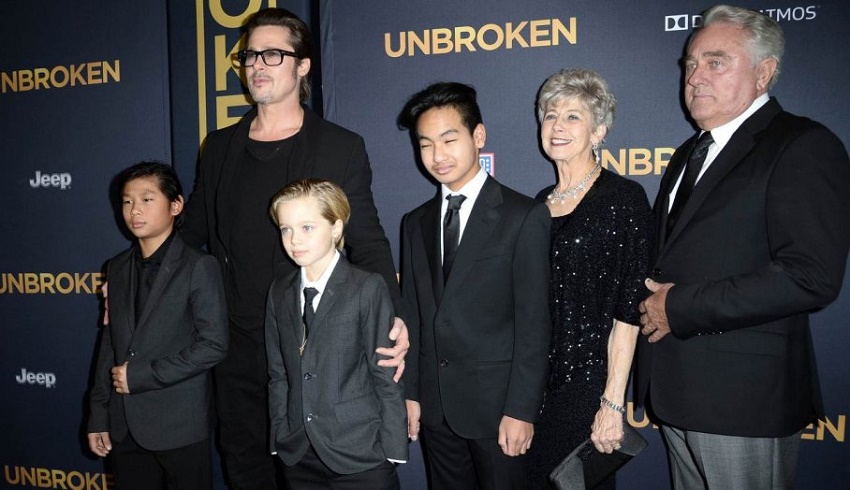
Brad Pitt and Angelina Jolie's eight-year-old daughter made headlines after announcing she wants to be called John instead of Shiloh. She also prefers to dress in male attire, like her older brothers Maddox and Pax, as seen at the premiere of her mother's new film, "Unbroken."
In 2010, Jolie told Vanity Fair that Shiloh has been a tomboy since the age of three. "She wants to be a boy," Jolie said. "So we had to cut her hair. She likes to wear boys' everything. She thinks she's one of the brothers."
The eight year old's desire to identify with the opposite sex, which is reportedly supported by her parents, has sparked a serious media discussion regarding gender identity in young children: what should a parent do when a child seems to 'want to be' a member of the opposite sex? Does this hint at serious identity issues, or is it simply a part of growing up?
The Telegraph spoke with clinical psychologist Linda Blair who advised parents to not immediately jump to the conclusion their child is struggling with gender dysmorphia.
"It could be so many other things that I wouldn't jump to that conclusion. It's normal [for children with older siblings] to want to copy them and be like them," Blair explained.
"That's quite a normal phase for a lot of kids. A lot of times kids in the middle of a large family are looking desperately and legitimately for ways to get attention. So they'll do whatever it takes to get it."
However, according to research conducted by Anne Fausto-Sterling of Brown University, 1 in 100 children legitimately believe they have "bodies that differ from standard male or female.".
According to Dr. Kenneth Zucker, head of the child and adolescent gender-identity clinic at Toronto's Centre for Addiction and Mental Health, such behavior is a "curious indicator of deeper problems within the family" and is not, in fact, biological.
"Gender dysphoria (confusion) is increasingly understood [by some]...as having biological origins [in] small parts of the brain. In terms of empirical data, this is not true. It is just dogma," he writes.
Professor Eric Vilain, a UCLA geneticist specializing in sexual development, recently explained to the Atlantic Monthly that, "there is no evidence of biological influence on transsexualism yet." If we ever do find some hard-wired biological component for gender identity, he says, "my hunch is, it's going to be mild." He added that family factors play a key role.
Peter Sprigg, a senior fellow for policy studies at the Family Research Council, suggests that mothers and fathers should work together to provide loving but intentional direction for their young children who exhibit interest in behaving like the opposite gender.
"Social, psychological, and physical cues about gender are among the first things a child learns in the developmental process," said Sprigg. "When confusion about sex and sex roles is introduced by a classmate, a school, or society as a whole, it can only disrupt that process. Since God made us male and female, such confusion may cause a child to doubt the goodness of God's created order."
"Unfortunately, LGBT activists have been so successful in establishing ideological hegemony over the professions of psychology, psychiatry and increasingly, all of medicine, that when a child has gender identity problems, it's difficult to find competent counseling to help overcome, rather than solidify, these problems," said Sprigg.
"Essentially, society is being forced to affirm a clear, physical, biological falsehood - the idea that someone with healthy male sex organs and normal male chromosomes can become a female, and vice versa," he said. "We are being told that when there's a conflict between a person's objective biological reality and their subjective feelings, it is the body that needs to be 'fixed.' This is utterly bizarre, and we should not be afraid to say so."
Christian organization Focus on the Family suggests that parenting style is critical for helping children move out of gender confusion.
"With children showing opposite-sex tendencies, mothers should deeply and carefully guard against over protection and coddling, while fathers should guard against shaming and nagging," the organization advises.
"[M]others should become the pushers away from gender-discordant behavior and fathers the gentle pullers toward healthy gender-aligned attitudes and behaviors."














